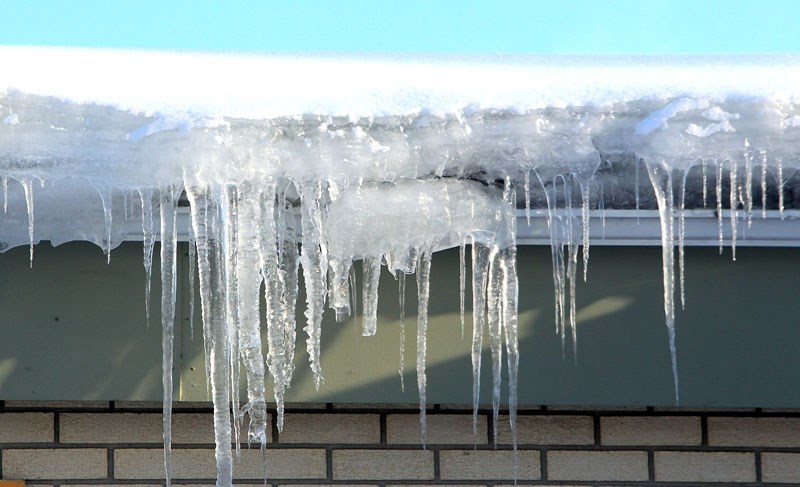With spring around the corner, some people with older homes may consider filling the cracks and sealing the windows to avoid drafty rooms next winter.
But making homes airtight should come with some consideration.
Without the cracks, the home is cut off from natural indoor air circulation, requiring ventilation systems to be put in place.
"With ventilation, really what you are talking about is having enough makeup air in your house to compensate for the combustion air that is used in your furnaces and fireplaces," said Mike Howes, owner of local DKC Sparklean Group.
Furnaces need air to heat the home, turning oxygen into carbon monoxide that escapes through pipes or the chimney.
In old homes, air sifts through cracks in doors, walls and windows. That creates higher heating costs, but also gives furnaces and fireplaces a consistent supply of fresh air to feed on.
Modern buildings are sealed airtight. Howes said they have special vents built inside the walls – similar to dryer vents – that supply furnaces with fresh air from the outside.
The problems start when people seal their old homes airtight. They suddenly lack that extra supply of oxygen their furnace needs.
If they don't add extra air vents, homeowners run the danger that the furnace starts sucking air from within its pipes, or down the fireplace, Howes said.
This can create a backdraft of carbon monoxide into the home, and in the worst cases – though he cautioned that it happens rarely – lead to carbon monoxide poisoning.
The furnace may also pull warm air from other rooms inside the home, cooling them down and pushing up the heating bill.
"And if you don't have the dampers closed and the furnace is on, you can get air coming back down the chimney," Howes said.
"So you can get a cold draft but also bring smoke into your house if you have a small fire going. That's why you need to make sure to have makeup air coming into your house."
Ventilation of the attic
Ventilation is not only important inside the house but also beneath the roof.
Howes said attics should have vents or holes in the soffit to let air out. Otherwise, improper ventilation can lead to premature wear on shingles, ice damming and leaking roofs.
In the winter, if vents are blocked, heat builds up underneath the roof and melts the snow on top.
Since the bottom of the roof is colder than the top, the water runs down and freezes at the eaves trough.
This creates a pool of water beneath the shingles, which causes water to drip into the home.
"When you have your insulation, it's supposed to be only in the middle of the roof covering the house, not covering the soffits," Howes said.
"If you have insulation all the way up there it blocks the holes and now you have a heated roof, that melts the snow and then you get ice dams."
The reverse happens in the summer.
When too much heat builds up in the attic, shingles curl up and deteriorate.
Howes said homeowners with too much insulation and bad air exchange in the attic are lucky if they get five or six years out of shingles designed to last 20 to 25 years.
"If they have holes in the soffit and there's a good vent, when the roof heats up the air will escape and you won't get that heat buildup inside the attic," he said.
"But it's not something that people usually think about until their roof is leaking or their shingles are all curled and warped."
He added that it's not always the fault of the homeowner or builder if the roof lacks proper ventilation. In some older homes, problems occur from insulation that needs replacement.
Health concerns
Improper ventilation in homes not only affects the quality of airflow but can increase allergies associated with animal dander and mould.
Proper ventilation creates an airflow that pulls animal hairs out of the house, said Warren Kindzierski, associate professor for environmental health sciences at the University of Alberta's School of Public Health.
Otherwise they need to be vacuumed.
"If you have a young child in the home that has asthma, and dander is one of the triggers, not getting that stuff out can cause worsening of asthma," he said.
Mould enters the home from the outside but needs moisture to grow.
Without proper ventilation, water accumulates on windows and in the bathroom, creating an environment where mould can grow.
Operating the kitchen fan regularly is also important to keep food particles from spreading.
Whenever food is heated, the fan sucks up particles of grease and smoke. If the fan isn't used or the filter isn't clean, the particles accumulate as grime on furniture, floor and fabrics.
In Canada, ventilation causes more problems in the winter than in the summer, Kindzierski said.
"In the winter time we don't have too many windows open. So the only time air is moved is when the furnace is running," he said.
"So the ventilation is quite low for our climate."




